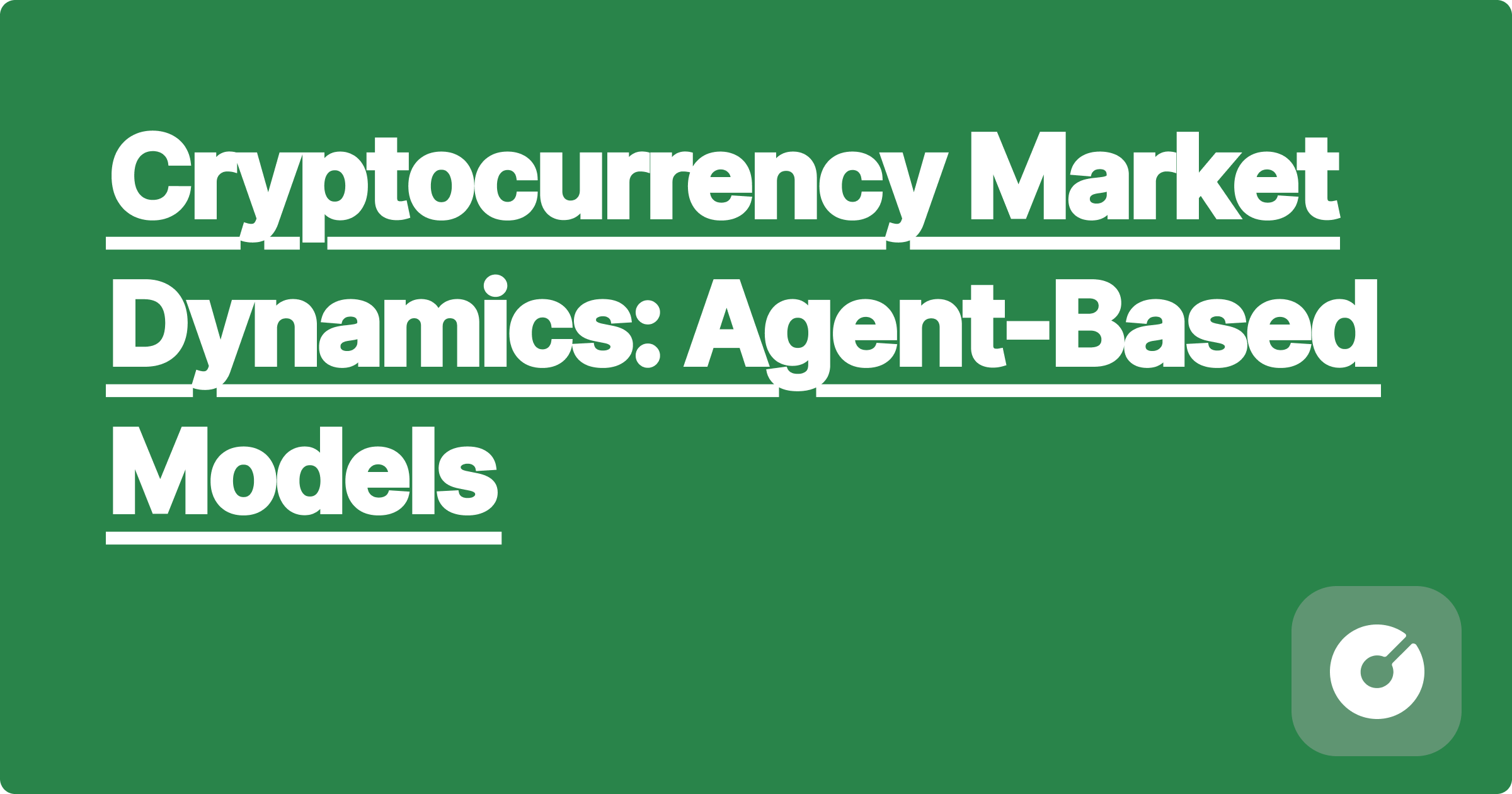
```html
Cryptocurrency Market Dynamics: Agent-Based Models
pre {
background-color: #f4f4f4;
padding: 10px;
border-radius: 5px;
overflow-x: auto;
}
.equation {
background-color: #f9f9f9;
padding: 10px;
border-radius: 5px;
font-family: "Times New Roman", serif;
}
.tip {
background-color: #e0f7fa;
padding: 10px;
border-radius: 5px;
border-left: 5px solid #00bcd4;
margin-bottom: 10px;
}
.warning {
background-color: #fff2e6;
padding: 10px;
border-radius: 5px;
border-left: 5px solid #ff9800;
margin-bottom: 10px;
}
This blog post delves into the application of agent-based modeling (ABM) to understand the complex dynamics of cryptocurrency markets. We will explore cutting-edge research, practical implementation details, and future research directions, aiming to provide a comprehensive guide for graduate students and researchers.
Traditional econometric models often struggle to capture the emergent behavior of cryptocurrency markets, characterized by high volatility, speculative trading, and the influence of social media sentiment. Agent-based models, on the other hand, offer a powerful framework to simulate the interactions of individual agents (e.g., traders, miners, exchanges) and understand the resulting market dynamics. Recent publications like [cite a 2024/2025 preprint on ABM in crypto from arXiv or a similar repository] highlight the increasing sophistication of these models.
Recent research (e.g., [cite a relevant 2024/2025 paper]) demonstrates the crucial role of social media sentiment in influencing cryptocurrency prices. We can incorporate this by feeding sentiment scores (derived from tools like VADER or BERT) directly into agent decision-making processes. For example, a highly positive sentiment might increase an agent's risk appetite, leading to increased trading volume.
# Example of sentiment integration in agent decision-making
if sentiment_score > 0.8:
agent.risk_appetite = agent.risk_appetite * 1.2
# Increase trading activity based on high sentiment
Cryptocurrency markets are inherently networked. The influence of "whales" (large holders) and the propagation of information through social networks are key factors. We can model this using network analysis techniques and incorporate them into the ABM framework. [cite a relevant paper exploring network effects in crypto]. For instance, we might model the spread of FUD (Fear, Uncertainty, and Doubt) as a contagion process on a network.
Moving beyond simple trading strategies, we can incorporate more sophisticated agent behaviors such as:
A typical ABM for cryptocurrency markets might include the following components:
# ABM simulation loop
for time_step in range(simulation_length):
# 1. Update sentiment scores
sentiment = get_sentiment_from_social_media()
# 2. Agent decision-making
for agent in agents:
agent.update_strategy(sentiment, market_data)
order = agent.generate_order()
order_book.add_order(order)
# 3. Order matching
order_book.match_orders()
# 4. Price update
price = calculate_price(order_book)
# 5. Data logging
log_market_data(price, volume, sentiment)
Simulating large-scale ABMs can be computationally expensive. The computational complexity is generally O(N^2) or higher, where N is the number of agents. Strategies for dealing with this include:
Several firms are using ABM to model cryptocurrency markets, including [Insert names of relevant firms or research projects if available, maintaining confidentiality where necessary]. For instance, [describe a specific application, e.g., risk management for a crypto exchange]. Open-source tools like NetLogo and MASON can be used for implementing these models.
Despite the potential, ABM faces challenges:
Future research should focus on:
The use of ABMs in cryptocurrency markets raises ethical considerations. The accuracy of predictions made by these models can influence investment decisions and market stability. Transparency in model design and validation is crucial to mitigate potential biases and risks.
Agent-based modeling provides a powerful tool to understand the complex dynamics of cryptocurrency markets. By incorporating cutting-edge techniques and addressing the challenges outlined above, we can develop more accurate and insightful models that contribute to a more robust and transparent cryptocurrency ecosystem. This blog post provides a starting point; further exploration of the cited literature and experimentation with ABM tools are crucial for mastering this field.
```
```html
```
Second Career Medical Students: Changing Paths to a Rewarding Career
Foreign Medical Schools for US Students: A Comprehensive Guide for 2024 and Beyond
Osteopathic Medicine: Growing Acceptance and Benefits for Aspiring Physicians
Joint Degree Programs: MD/MBA, MD/JD, MD/MPH – Your Path to a Multifaceted Career in Medicine
Cryptocurrency Market Dynamics: Agent-Based Models
Crowdfunding Your Project: AI Marketing Strategies
Stock Market Analysis: AI Tools for STEM Investors
Building Financial Models: AI Tools for STEM Startups
Cryptocurrency for STEM Students: AI Trading and Analysis
Negotiating Your First STEM Salary: AI-Powered Market Research